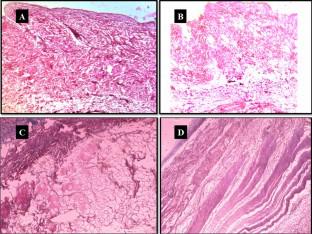Cell and Tissue Banking ( IF 1.5 ) Pub Date : 2023-09-03 , DOI: 10.1007/s10561-023-10109-w Leila Taghizadeh Momen 1 , Arash Abdolmaleki 2 , Asadollah Asadi 1 , Saber Zahri 1

|
Utilization of acellular scaffolds, extracellular matrix (ECM) without cell content, is growing in tissue engineering, due to their high biocompatibility, bioactivity ad mechanical support. Hence, the purpose of this research was to study the characteristics and biocompatibility of decellularized rat skin scaffolds using the osmotic shock method. First, the skin of male Wistar rats was harvested and cut into 1 × 1 cm2 pieces. Then, some of the harvested parts were subjected to the decellularization process by applying osmotic shock. Comparison of control and scaffold samples was conducted in order to assure cell elimination and ECM conservation by means of histological evaluations, quantification of biochemical factors, measurement of DNA amount, and photographing the ultrastructure of the samples by scanning electron microscopy (SEM). In order to evaluate stem cell viability and adhesion to the scaffold, adipose-derived mesenchymal stem cells (AD-MSCs) were seeded on the acellular scaffolds. Subsequently, MTT test and SEM imaging of the scaffolds containing cultured cells were applied. The findings indicated that in the decellularized scaffolds prepared by osmotic shock method, not only the cell content was removed, but also the ECM components and its ultrastructure were preserved. Also, the 99% viability and adhesion of AD-MSCs cultured on the scaffolds indicate the biocompatibility of the decellularized skin scaffold. In conclusion, decellularized rat skin scaffolds are biocompatible and appropriate scaffolds for future investigations of tissue engineering applications.
中文翻译:

用于皮肤组织工程应用的无细胞大鼠皮肤支架的表征和生物相容性评估
由于其高生物相容性、生物活性和机械支撑,无细胞支架、无细胞内容物的细胞外基质 (ECM) 在组织工程中的利用正在不断增长。因此,本研究的目的是利用渗透休克法研究脱细胞大鼠皮肤支架的特性和生物相容性。首先,收获雄性Wistar大鼠的皮肤并切成1×1cm 2 的块。然后,通过施加渗透休克对一些收获的部分进行脱细胞处理。通过组织学评估、生化因子的量化、DNA量的测量以及通过扫描电子显微镜(SEM)拍摄样品的超微结构,对对照样品和支架样品进行比较,以确保细胞消除和ECM保存。为了评估干细胞的活力和对支架的粘附,将脂肪源性间充质干细胞(AD-MSC)接种在无细胞支架上。随后,对含有培养细胞的支架进行MTT测试和SEM成像。研究结果表明,渗透压休克法制备的脱细胞支架不仅去除了细胞内容物,而且还保留了ECM成分及其超微结构。此外,在支架上培养的 AD-MSC 的 99% 活力和粘附性表明脱细胞皮肤支架的生物相容性。总之,脱细胞大鼠皮肤支架具有生物相容性,适合未来组织工程应用的研究。



























 京公网安备 11010802027423号
京公网安备 11010802027423号